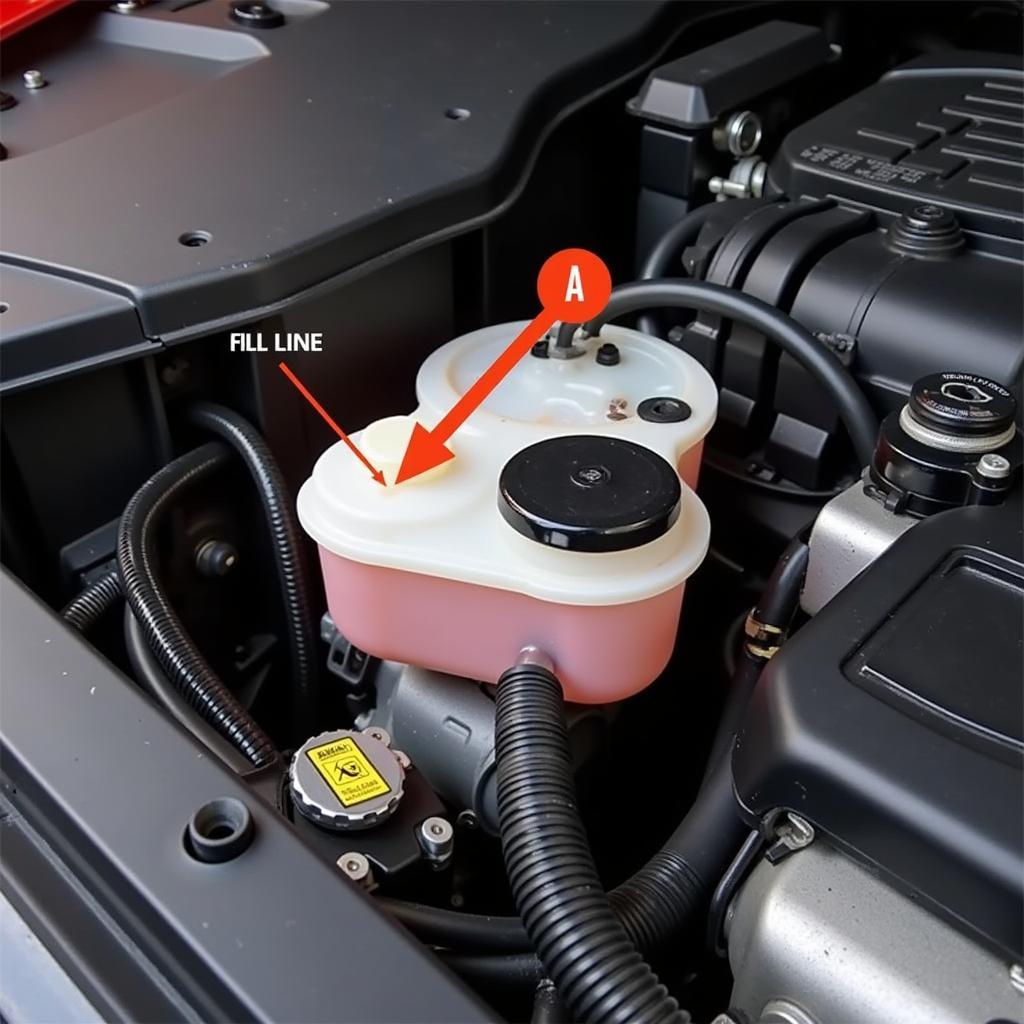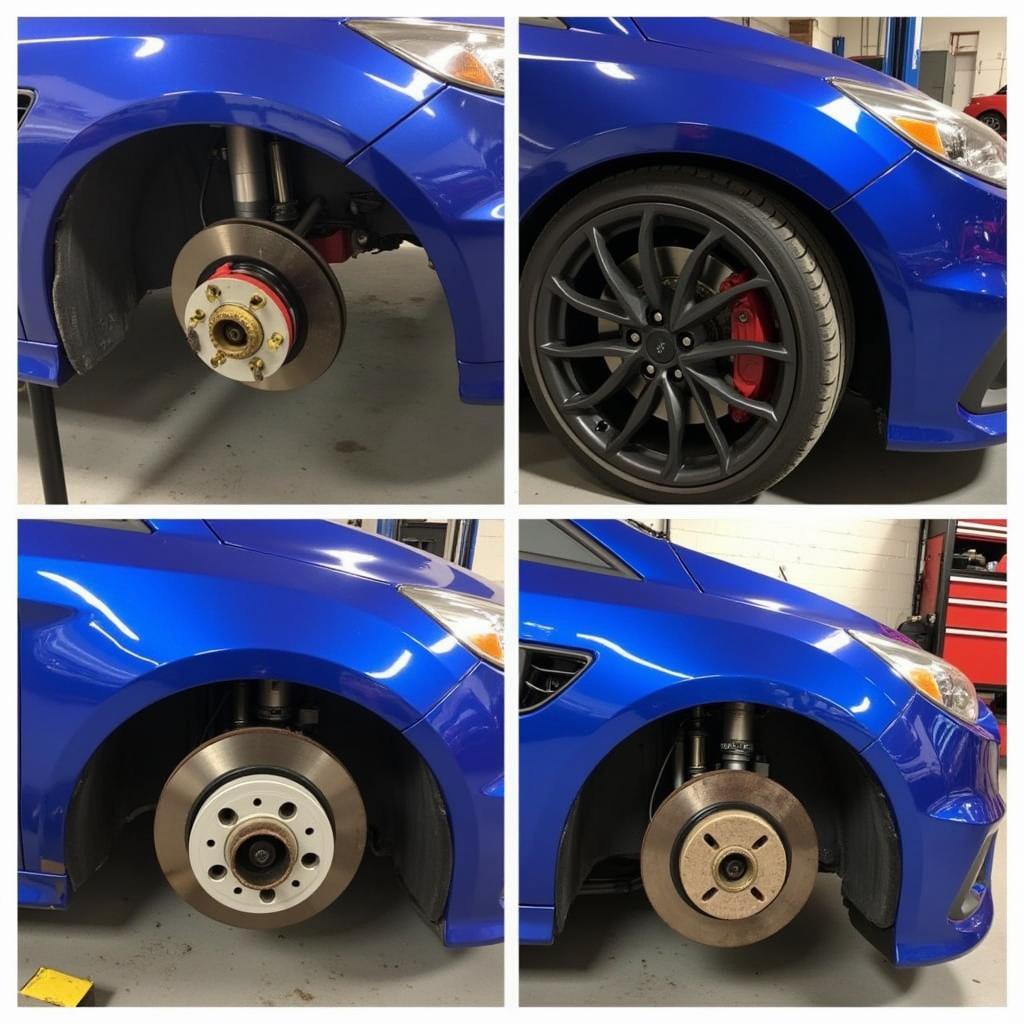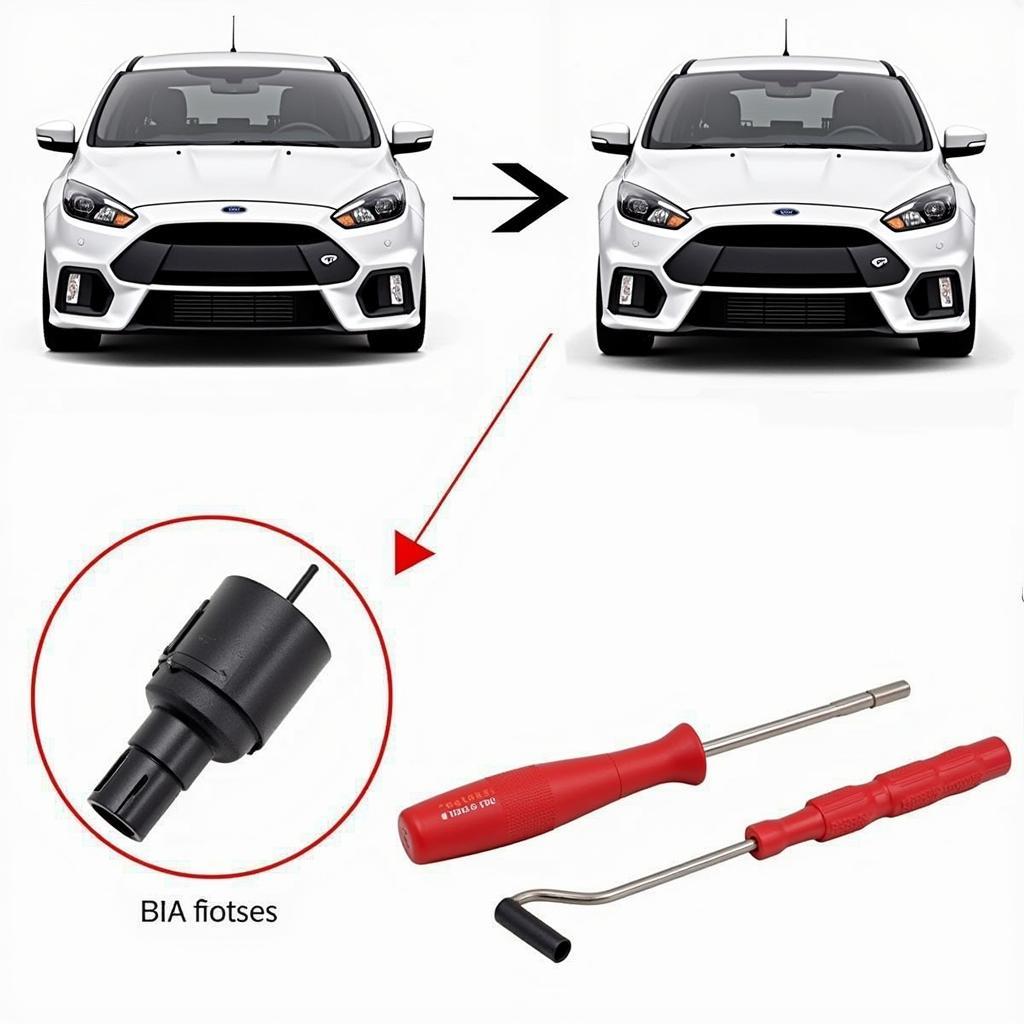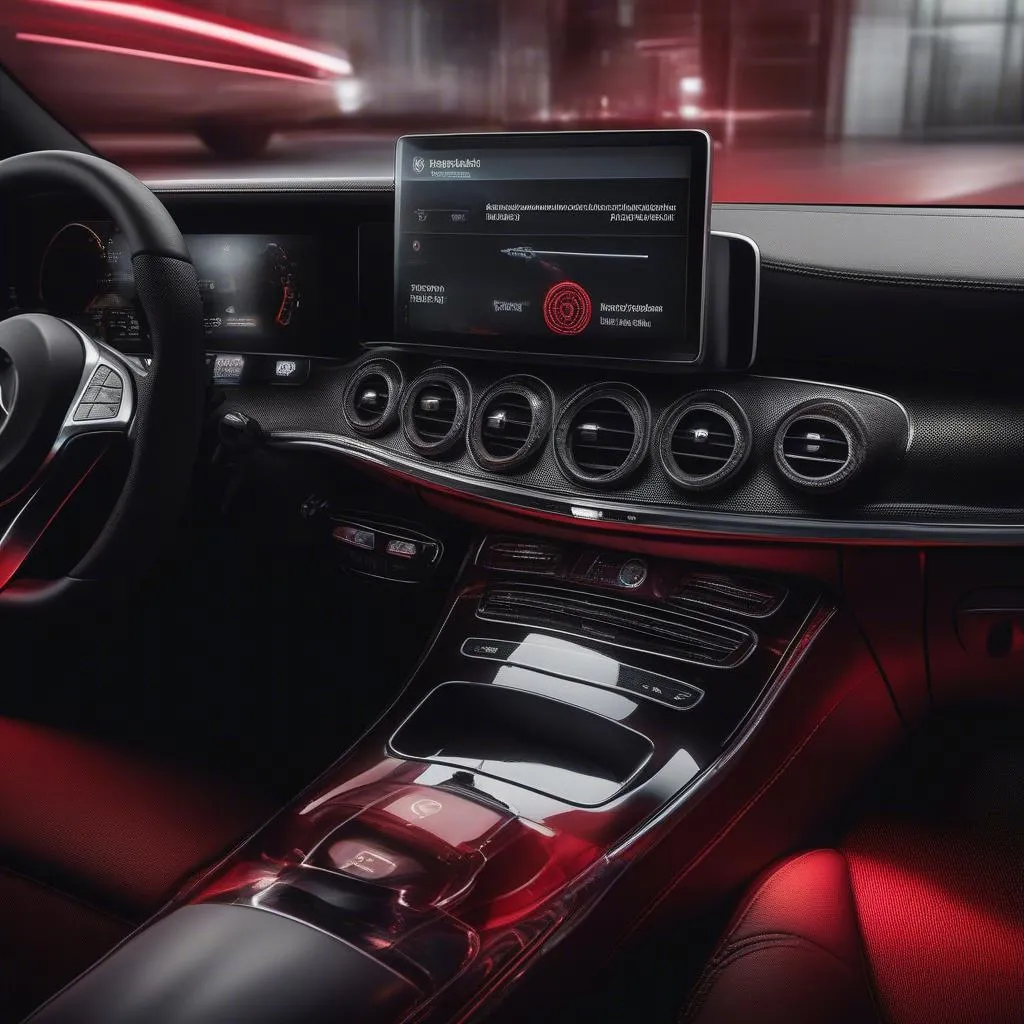The dreaded FRS brake warning light illuminating while braking can be a nerve-wracking experience. Understanding why this light activates and what steps you can take to address the issue is crucial for your safety and the longevity of your vehicle. This article will guide you through the potential causes, diagnostic procedures, and solutions for an FRS brake warning light activating during braking.
Understanding the FRS Brake System
The Ford FRS (Focus RS) braking system is a complex network of components designed to provide optimal stopping power and control. When the FRS brake warning light comes on, it signifies a potential problem within this system, requiring immediate attention. Ignoring this warning could lead to decreased braking performance and potentially dangerous driving conditions.
Common Causes of an Illuminated FRS Brake Warning Light
Several factors can trigger the FRS brake warning light. These include:
- Low Brake Fluid: This is often the most common culprit. Low brake fluid can indicate a leak in the system or worn brake pads.
- Faulty Brake Sensor: The brake sensor monitors fluid levels and pad wear. A malfunctioning sensor can trigger the warning light even if there isn’t an actual problem.
- Worn Brake Pads: As brake pads wear down, the brake fluid level drops. The warning light can illuminate when the pads reach a critical wear point.
- ABS Issues: Problems within the Anti-lock Braking System (ABS), such as a faulty sensor or control module, can also trigger the brake warning light.
- Parking Brake Engaged: Sometimes, the simplest explanation is the correct one. Make sure the parking brake is fully disengaged.
 Checking the Ford Focus RS brake fluid reservoir
Checking the Ford Focus RS brake fluid reservoir
Diagnosing the Problem
Diagnosing the cause of the illuminated FRS brake warning light involves a systematic approach:
- Check the Parking Brake: Ensure the parking brake is fully released.
- Inspect Brake Fluid Level: Open the hood and locate the brake fluid reservoir. Check the fluid level against the minimum and maximum markings. If the level is low, add the appropriate brake fluid.
- Check for Leaks: Inspect the brake lines, calipers, and wheel cylinders for any signs of fluid leaks.
- Inspect Brake Pads: Visually inspect the brake pads through the wheel spokes. If they appear thin, measure their thickness. Replace worn brake pads as needed.
 Inspecting worn brake pads on a Ford Focus RS
Inspecting worn brake pads on a Ford Focus RS
“Regularly checking your brake fluid level is one of the easiest and most effective ways to prevent brake issues,” advises John Miller, a certified automotive technician with over 20 years of experience. “A simple visual inspection can save you a lot of trouble down the road.”
Solutions and Repairs
Depending on the diagnosis, the solutions can range from simple DIY fixes to more complex repairs requiring professional assistance:
- Adding Brake Fluid: If the fluid level is low, add the correct type of brake fluid as specified in your owner’s manual.
- Replacing Brake Pads: Worn brake pads should be replaced promptly.
- Repairing Brake Leaks: Address any brake fluid leaks immediately. This may involve replacing brake lines, calipers, or wheel cylinders.
- Addressing ABS Issues: Diagnosing and repairing ABS problems typically requires specialized diagnostic tools and expertise. Consult a qualified mechanic.
- Replacing Brake Sensor: A faulty brake sensor needs to be replaced.
 Replacing the brake sensor on a Ford Focus RS
Replacing the brake sensor on a Ford Focus RS
Conclusion
The FRS brake warning light coming on when braking shouldn’t be ignored. Addressing the issue promptly can prevent further damage and ensure your safety on the road. While some fixes are simple, others require professional attention. Remember, regular maintenance and timely repairs are essential for optimal braking performance and overall vehicle safety. Don’t hesitate to consult a qualified mechanic if you’re unsure about any aspect of your FRS brake system.
“Remember, your brakes are your vehicle’s most crucial safety system,” emphasizes Sarah Johnson, a lead automotive engineer specializing in braking systems. “Don’t compromise on their maintenance and repair.”
FAQ
-
What should I do if the FRS brake warning light stays on after adding brake fluid? This indicates a more serious issue, such as a leak or a faulty sensor. Consult a mechanic immediately.
-
How often should I check my brake fluid level? It’s recommended to check your brake fluid level at least once a month.
-
Can I drive with the FRS brake warning light on? It’s not recommended. Driving with the warning light on could be dangerous.
-
How much does it cost to replace brake pads on an FRS? The cost varies depending on the type of brake pads and labor rates.
-
How can I prevent brake problems in my FRS? Regular maintenance, including brake fluid checks and timely pad replacements, is key to preventing brake problems.
-
What is the difference between the FRS brake warning light and the ABS light? The brake warning light indicates a general brake system issue, while the ABS light specifically relates to the Anti-lock Braking System.
-
What type of brake fluid should I use in my FRS? Consult your owner’s manual for the specific type of brake fluid recommended for your vehicle.

